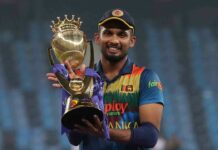For such a young man, Phillip Hughes saw clearly the road he wanted to travel.
In cricket terms, it began with the Pacific Highway that runs right through his home town of Macksville and crosses the adjacent Nambucca River marking the mid-point of the journey between Sydney and Brisbane.
As a hugely talented and even more highly driven 17-year-old, Hughes saw that road stretching from his family’s banana property to the opportunities afforded by the city.
And despite his innate shyness and a country boy’s love of the bucolic life he gave up his other boyhood love – rugby league – and took his cricket kit to Sydney.
He was chasing a dream born around the time he first turned out for the Macksville RSL Cricket Club’s A-grade team against some combative and vastly more seasoned country cricketers – at the impressionable age of 12.
From the moment he moved into a small apartment close to his batting coach’s academy – the same address that had previously hosted another of shared mentor Neil D’Costa’s pupils, Michael Clarke – nobody who knew Phillip Hughes doubted that road would take him further.
To the Sydney Cricket Ground, where he played his first match for New South Wales 10 days before his 19th birthday, making him the youngest to don the baggy blue cap since Clarke eight years earlier, another link in the chain of friendship that bound the pair.
To Lord’s, cricket’s revered spiritual home where he represented its local county team Middlesex for a stint as a 20-year-old.
And, ultimately, to the Australian team at venues as deified and diverse as Wanderers in Johannesburg – where he became a Test cricketer in 2009 – Colombo, Delhi and the Melbourne Cricket Ground on Boxing Day.
Hughes celebrates reaching his maiden century, in his second Test in March 2009 // Getty Images
But even while charting a path through the fraught and often frustrating landscape of professional cricket, Hughes lifted his eyes to a more distant horizon as he reiterated during the Australian team’s one-day series in Zimbabwe last August.
That triangular tournament which also featured South Africa and the home nation, provided a thumbnail sketch of the lot Hughes came to bear as Australian cricket’s perennial ‘next man in line’.
Publicly anointed as the preferred opening option should injury sideline Clarke from the series’ first game, Hughes’s name was then conspicuously absent when the team sheet was finalised on match morning and he was, instead, once more assigned the job of 12th man.
That trip had already given rise to frustration and grumpiness among members of the Australian touring party who felt a sense of confinement in their Harare hotel.
But Hughes was never one to be consumed by misfortunes dealt, or outcomes beyond his control.
“I’ve been in and out of the national side probably four or five times now,” he told cricket.com.au during winter training in Brisbane earlier this year.
“I don’t like to dwell on what’s happened.
“If you don’t pick yourself up and keep moving forward you’re going to be left right back in the pack.
“That’s something I’ve always looked to do, stay really positive in my mindset and pick myself up and look to get better every time I train.
“It’s about getting out of bed in the morning and becoming a better player, that’s my mindset because I suppose I’ve had a few kicks over the past few years.”
In the game’s parlance, he learned to focus on the next delivery and the infinite possibilities it presented.
And that vision extended far beyond cricket.
Over coffee in the lounge lobby of Harare’s charmingly chaotic Rainbow Towers Hotel, Hughes’s eyes sparkled beneath his ever-affixed cap as he detailed the passion that occupied his hours away from training sessions and team meetings.
The Angus cattle buying and breeding program he established with his father, Greg, which not only gave him a focus and a purpose beyond the vicissitudes of competitive cricket but was to be his lifeblood when his sporting journey concluded.
“Not a chance,” he replied in a flash, with that endearing half-smile that so infuriated bowlers trying to get him out, when asked if he saw his future in cricket once his playing days were done.
“The day I play my last game I’m heading straight up to the property, I’ll tell you that right now.”
Hughes in the UAE with Australia’s Test squad last month // Getty Images
He then went into exhaustively fascinating detail about the methodology behind the selection of breed animals, what to look for when considering a purchase, and the respective merits of the competing beef brands.
To illustrate his presentation he laid down a mobile phone and trawled through a limitless catalogue of bulls and steers, cows and heifers stopping here and there to explain the attributes of a particularly striking specimen.
No trite selfies or self-important snaps of last night’s entrée for Phillip Hughes.
But it was when he unveiled his own branding exercise – the logo he helped to design for the joint enterprise with his dad, Four O Eight Angus (408 being his Australian Test cap number) – that the genuine excitement about his post-cricket career became palpable.
For a fleeting moment.
“I’m no designer,” he said animatedly, before catching himself and leaning back in his chair as he flicked the phone back to images of cattle.
“But I still reckon it’s pretty cool.”
Unassuming as much as he was forever undaunted, Hughes had initially organised to return to the family property for the duration of Australia’s three-week series in Zimbabwe because he did not expect to be named in the touring party.
But when told he had indeed made muster, he simply swapped his stockman’s hat for the cricket variety, changed his travel arrangements to instead squeeze in a few days at the farm on his way back to his new home in Adelaide from Harare, and got on with it.
Like so many from a bush background, Hughes comfortably married professionalism with pragmatism – but admitted he had trouble resisting the call of Nambucca Shire.
“I spent six to eight weeks after the last Shield season with my family back home in the country which was awesome really,” he said recently.
“Just to get away from cricket, spend some real quality time with my mum (Virginia) and dad (Greg) and my sister (Megan) and brother (Jason) back home at the farm, which is something I really love doing.
“I love getting out there and getting me hands dirty and on the tractors with Dad and moving the cattle around and doing some real cattle work.
“It’s something I’ve always been into from a small age.
“It’s totally different to playing cricket. It really relaxes me.”
Hughes with father Greg during his Test debut in 2009 // Getty Images
In essence, it’s this grounding that helped to explain why the plight that Hughes so lucklessly and undeservedly found himself in touched the hearts of so many.
Teammates past and present, greats of the game, fellow sportsmen and women, friends, casual acquaintances and so many fans who simply enjoyed watching him go about his work for whatever team, in whatever format.
His innate competitiveness and unclouded vision of where he wanted to get to meant he – and, by osmosis, his team – was so often able to find a way to succeed regardless of opposition attempts to quell him.
But his hunger to score runs and to constantly identify and eradicate flaws in his game came wrapped in a quiet humility and a genuineness that meant teammates gravitated to him, and opponents respected him without grudge.
Hughes, who would have turned 26 on Sunday, happily acknowledged that as a batsman – who fashioned his own unorthodox technique in backyard matches against his dad and brother, Jason, at Macksville – he was no aesthete.
When he arrived on the international scene he was denounced by some for his almost exclusive reliance on off-side scoring shots, a legacy of his developmental years where anything hit with force towards leg was bound for the windows overlooking the back porch.
So Hughes applied the work ethic that successfully took him from high school to Sydney, from junior cricket to Test matches, from solid first-class opener to explosive Twenty20 hitter, and willed himself back into the Australian selectors’ notebooks by scoring heavily and repeatedly.
In many ways, his home-spun batting method was his point of difference.
It meant he was able to hit the ball to parts of the field that rival captains and bowlers figured were unreachable and were therefore left unprotected, as he showed earlier this year when he became the first Australian man to score a double-century in a List-A 50-over match.
That innings helped pave the road back to the Australian one-day squad that went to Zimbabwe, then to the Test squad that travelled to the UAE a month later, and ultimately to the cusp of that recall to the Australian XI that had driven him ever onward.
Because, as he once conveyed when asked – prior to a meaningless county fixture towards the end of a disappointing Ashes tour on which he’d lost his Test berth – what motivated him to go out and succeed with no tangible incentive, it was his nature.
“Every time I bat I aim to get runs, I just love being in the middle,” Hughes said recently.
“But I like to keep things fairly simple.
“I love playing cricket and that’s hopefully what I will continue to do.”
It was a clear, pure vision that carried Phillip Hughes to the upper-most echelon, as a cricketer and as a man.



















